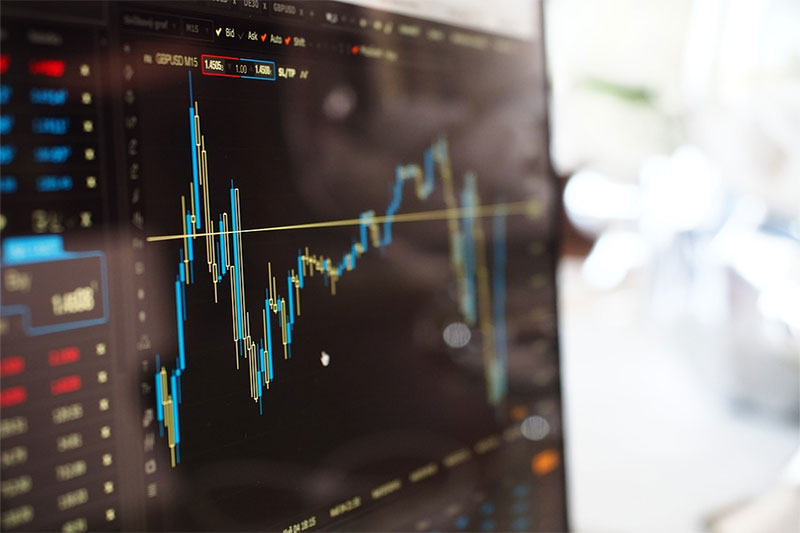Spread trading offers a dynamic way to profit in both forex and stock markets. By trading on the price difference between two assets, traders can leverage market movements to their advantage. This strategy not only enhances potential returns but also allows for risk management. Ready to uncover the secrets of spread trading in these bustling markets? Let’s dive in! Exploring the versatility of spread trading across forex and stock markets becomes more intuitive with the guidance available from the network at immediate-bitxdr.org.

The Mechanics of Spread Trading in Forex Markets
Understanding Currency Pairs and Spread Dynamics
Currency pairs are at the heart of forex trading. Each pair consists of a base currency and a quote currency. For example, in the pair EUR/USD, EUR is the base currency, and USD is the quote currency.
The spread is the difference between the bid (sell) price and the ask (buy) price. This difference represents the cost of trading, making it a crucial factor for traders to consider. In forex, spreads can be fixed or variable, influenced by market conditions.
Key Strategies for Effective Forex Spread Trading
Effective forex spread trading involves understanding market trends and timing trades accurately. One popular strategy is the “carry trade,” where traders capitalize on the interest rate differential between two currencies.
For instance, if the interest rate in Japan is low and it’s high in Australia, traders might buy AUD/JPY to benefit from the interest rate spread. Another strategy is “news trading,” where traders react quickly to economic announcements, expecting increased volatility and potential profit opportunities.
Risk Management Techniques Specific to Forex Spread Trading
Risk management is crucial in forex spread trading due to the market’s high volatility. One effective technique is setting stop-loss orders to automatically close trades at a predetermined loss level, preventing further losses.
Another method is position sizing, where traders limit the amount of capital risked on a single trade, usually a small percentage of their total trading capital. Diversifying trades across different currency pairs can also reduce risk.
Navigating Spread Trading in Stock Markets
The Role of Market Sentiment and Volatility in Stock Spreads
Market sentiment and volatility significantly impact stock spreads. Positive sentiment, driven by strong economic indicators or corporate earnings, can narrow spreads as buying activity increases.
Conversely, negative sentiment widens spreads due to increased selling pressure. Volatility, the degree of price variation over time, also affects spreads. High volatility leads to wider spreads as market makers seek to compensate for the increased risk of rapid price changes.
Identifying Opportunities: Sectors, Indices, and Individual Stocks
Identifying opportunities in stock spread trading involves analyzing sectors, indices, and individual stocks. Certain sectors, like technology or healthcare, might offer better spread trading opportunities due to their growth potential and market activity.
Indices, such as the S&P 500, provide a broader market view and can highlight overall market trends. Within these indices, traders can pinpoint individual stocks showing strong performance or significant volatility.
Advanced Stock Spread Trading Strategies
Advanced strategies in stock spread trading include “pair trading,” where traders simultaneously buy and sell two correlated stocks, betting on their price divergence to revert.
For example, buying Apple and shorting Microsoft if their prices deviate significantly from historical patterns. Another strategy is “statistical arbitrage,” using mathematical models to identify price inefficiencies and execute trades before the market corrects them.
Comparative Analysis: Forex vs. Stock Spread Trading
Liquidity, Volatility, and Market Hours: Key Differences
Forex and stock markets differ in liquidity, volatility, and market hours. The forex market boasts high liquidity, with a daily trading volume exceeding $6 trillion, making it easy to enter and exit trades. In contrast, stock market liquidity varies, with blue-chip stocks being more liquid than smaller, less-traded stocks.
Forex market hours are continuous, operating 24 hours a day, five days a week, while stock markets follow specific hours based on their exchange locations, leading to potential gaps in trading.
Tools and Indicators Unique to Each Market
Both markets have unique tools and indicators. Forex traders commonly use tools like the Relative Strength Index (RSI) and Moving Average Convergence Divergence (MACD) to gauge momentum and trend strength.
Economic calendars are crucial for forex traders to track events like central bank meetings or employment reports. Stock traders, on the other hand, often rely on earnings reports, dividend announcements, and sector-specific news. Technical indicators like the Price-Earnings (P/E) ratio and Bollinger Bands help stock traders assess value and volatility.
Profit Potential and Risk Factors: A Comparative Study
The profit potential and risk factors in forex and stock spread trading vary. Forex trading offers high leverage, enabling significant profit from small price movements, but this also amplifies risk, leading to potential substantial losses. The decentralized nature of forex adds complexity, with varying regulations across countries.
Stock trading, while generally offering lower leverage, allows for long-term investment strategies and dividend income, providing a steadier profit stream. However, stock prices can be influenced by corporate actions or broader economic shifts, introducing risks like earnings disappointments or market crashes.
Conclusion
Spread trading bridges the gap between forex and stock markets, offering a versatile approach to trading. With the right strategies and risk management, traders can navigate these markets effectively. Embrace spread trading to diversify your portfolio and capitalize on market movements. Curious about mastering this technique? Connect with financial experts and continue your research for successful trading!









